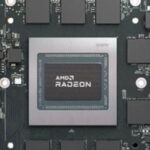
Hardware fanatics of a sure classic will turn out to be misty-eyed and nostalgic once they hear the phrase “Mendocino.” That may be precisely why AMD picked that codename for its personal cut-down, low-cost Ryzen processors. Officially introduced at Computex and supposed for functions where price is a very powerful issue, Mendocino is the codename for a collection of chips that tops out at 4 Zen 2 cores with hooked up RDNA 2 graphics.
Furthermore, the slide above—unearthed by Olrak (@Olrak29_ on Twitter)—appears to point that Mendocino’s Zen 2 cores aren’t precisely the identical as these featured in Aerith and different merchandise based mostly on Zen 2, just like the Xbox Series X, PlayStation 5, and naturally, the corporate’s Ryzen 3000-series processors.
For starters, the L3 cache on this chip has been slashed from 16MB (per-CCX on different Zen 2 elements) to simply 4MB. It additionally appears to have had half of its floating-point compute means lopped off. Zen 2 elements usually have 4 floating-point pipes, however this diagram, if legit, appears to point that Mendocino’s cores will solely have two. That will severely damage efficiency in crunchy, branchy floating-point code, however the markets these chips are meant for do not do numerous that form of computing anyway.
So saying, even when a Mendocino system had been outfitted with extraordinarily quick LPDDR5-6400 reminiscence, it is solely taking a look at about 51 GB/sec of reminiscence bandwidth. That’s barely greater than half of what the Steam Deck manages due to its full-sized 128-bit reminiscence bus. That 51 GB/sec must be shared with the 4 Zen 2 cores, too, and their small cache signifies that they will must dip out to foremost reminiscence extra usually as nicely.
To summarize, Mendocino actually is a processor created to be as cost-effective as potential, simply as Dr. Su stated at Computex. It has cuts to its Zen 2 cores and their related cache, it has a slim reminiscence bus to simplify product implementations, and it has an especially tiny 2-CU RDNA 2 GPU, in keeping with the leaked slide..
Despite all that, we’re really fairly assured that it’s going to nonetheless carry out nicely in its supposed market of schooling and low-powered units. We do must admit that we’re curious to see the impression of the incisions AMD made to chop prices, although. If we get our fingers on such a system, we’ll put it by its paces and report again.









